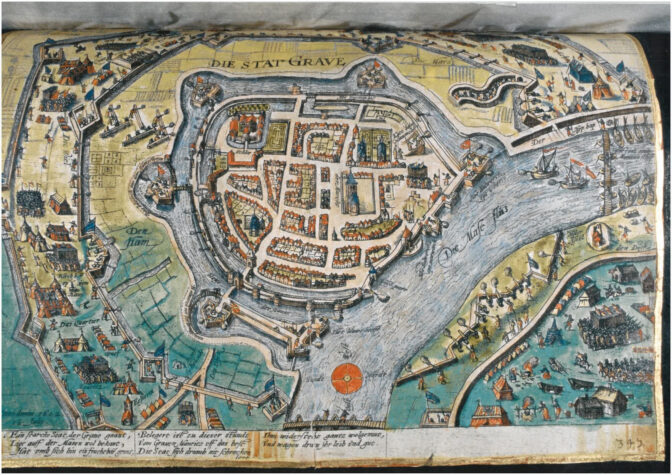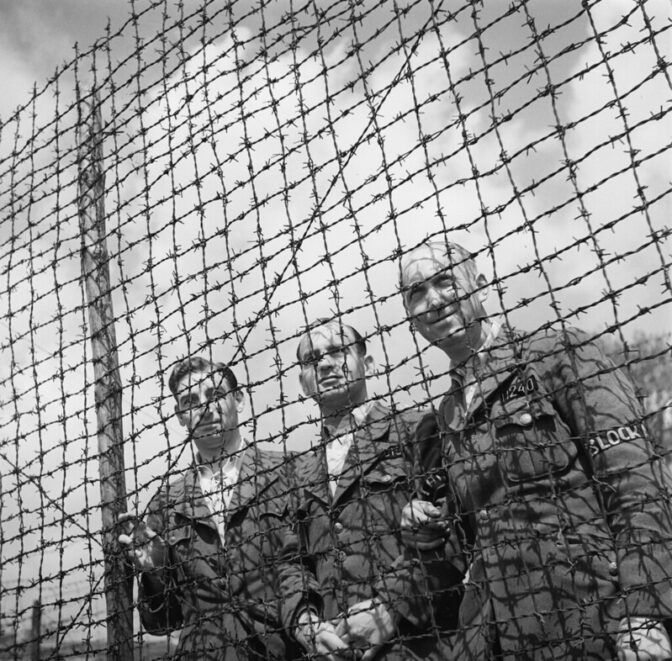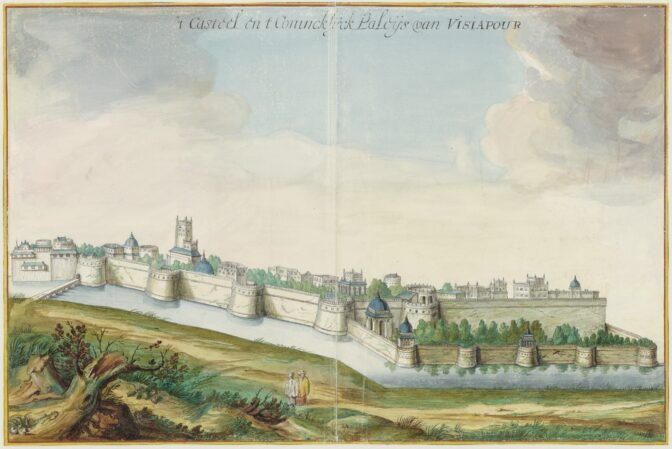Here is an overview of the new sources, projects, and news about archives that were announced last month.
Online sources
- The Historisch Centrum Overijssel published indexes of birth records of several Overijssel towns: Oldemarkt, Kuinre, Hellendoorn, Oldenzaal, and Hengelo. The indexes can be found on Open Archieven.
- The slave registers of Suriname for 1830-1863 are online via the website of the National Archives. The period 1851-1863 was already online, but the early registers for 1830-1850 have now been added. These registers record the ownership of slaves, in preparation for eventual abolition of slavery and compensation of the owners. For each enslaved person, you can find their name, their owner, and changes in status like birth, sales, manumissions, and deaths. Some records include the names of the mothers.
- The graves of the Algemene Begraafplaats Tongerseweg, a historic cemetery in Maastricht, Limburg, can now be searched via the Regionaal Historisch Centrum Limburg website.
- The records of the DRU, an iron factory in Ulft, Gelderland, are now available via scanning-on-demand via the Gelders Archief website.
- The records of the city of Grave in Noord-Brabant (1290-1810) have been digitized. The scans can be accessed at the Brabants Historisch Informatie Centrum website.

Map of the city of Grave (Public domain)
Websites
- The Amsterdam City Archives are building a new website. Because of technical problems with the current site, the new website will be delivered in two phases. The first phase, to be launched at the beginning of 2020, will have the finding aids, indexes, and image bank, but little new functionality. New functionality will then be added, including search functions to search the contents of the records using optical character recognition (OCR) or handwritten text recognition (HTR). [Source: Amsterdam City Archives]
Projects
- The Brabants Historisch Informatiecentrum is looking for volunteers to index population registers of the eastern part of Noord-Brabant. See the announcement (Dutch) for more information.
- The aldermen’s court records of Moergestel, Alphen and Chaam, Made, Drimmelen and Standhazen, Dongen, and Raamsdonk in Noord-Brabant will be digitized in 2020. They are currently being prepared for digitization and cannot be consulted. [Source: Regionaal Archief Tilburg].
- The records of the village administration of Loon op Zand, Noord-Brabant is being digitized and not available in the reading room. [Source: Regionaal Archief Tilburg]
- The building permits of Zwolle, Overijssel are being digitized and are not available in the reading room. [Source: Historisch Centrum Overijssel]
- The Central Bureau for Genealogy is looking for volunteers to index World War II cards of the Red Cross. After World War II, 500,000 people from the Netherlands were missing. The Red Cross was charged with finding these displaced persons and informing their next-of-kin about their fates. That administration is now being indexed. Volunteers can join the indexing project at Het Volk.

Liberation of Camp Amersfoort, 1945. Credits: Willem van de Poll, collection Nationaal Archief (public domain).
Archives and museums
- De Halve Maen, the replica of the same-named ship that Hudson used to explore North-America, will be relocated to Rotterdam. It will lie in the Delfshaven harbor where it will play a role during the Delfshaven 400 festivities to commemorate the departure of the Pilgrims. [Source: Historiek]
- A delegation from the Zeeuws Archief, the archives of Zeeland, visited the state of Michigan in the US. Many emigrants from Zeeland settled in Michigan. The Zeeuws Archief wants to promote their search engine use of their search engine Zeeuwen Gezocht. [Source: Zeeuws Archief].
- The National Archives of the Netherlands is going to collaborate wiht the Kerala State Archives in India to digitize the Ernakulam records from the 1600s and 1700s. Semi-Automatic Handwritten Text Recognition technology will be used to make the images searchable. The Dutch East India Company had several trade posts on the south-west coat of India. The Ernakulamrecords supplement the Dutch East India records that are already available in the Netherlands and Chennai, India. [Source: Nationaal Archief]

View of Visiapour castle, India, about 1665. Credits: Johannes Vingboons, collection Nationaal Archief (public domain)

